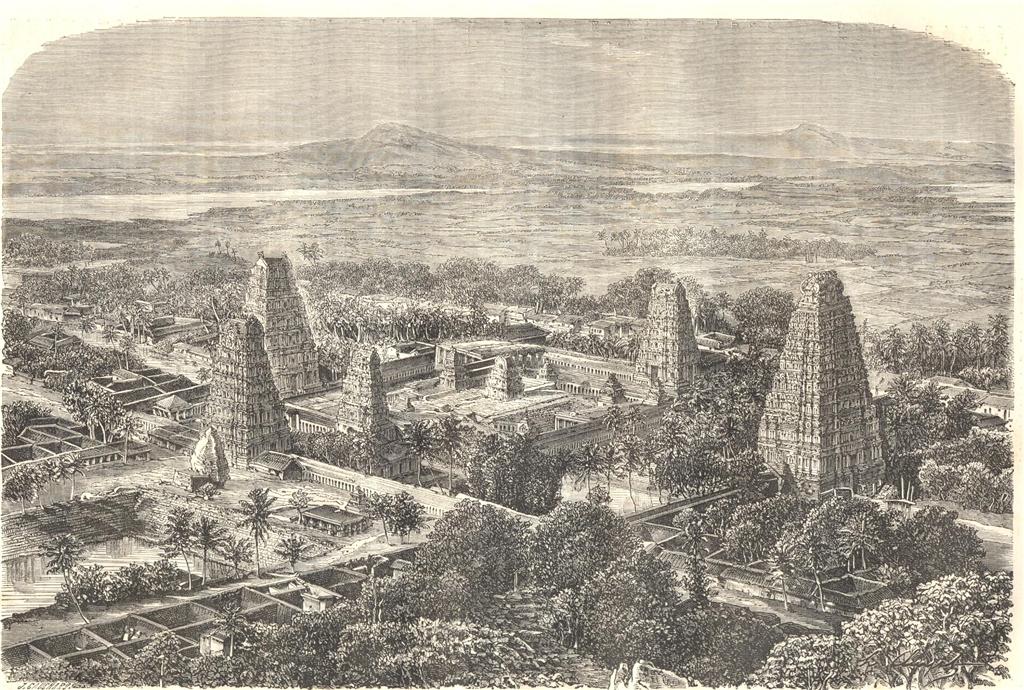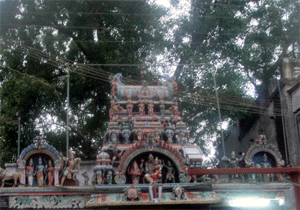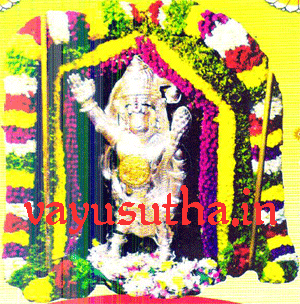
Kasi yatra
Most followers of Sanatana Dharma wish to visit Gaya at least once in their lifetime. The place called Gaya is also called Matru Gaya, where they pay their respects to their parents, especially to their mother. During their visit to Gaya, they would often visit Kasi, also called Varanasi, and Sangam, also called prayagraj [first among the prayags], where three rivers Ganga, Yamuna, and Saraswati meet and take a bath in the confluence. This trip is often called “kasi yatra” in common parlance.
Once considered a difficult tour to visit all these kshethras together, today advances in technology and communication have made things very easy and comfortable. People from all across the country including far-fledged districts in south, west, east, or north India make it a point to visit this holy place and pay their obeisance.
Visiting these holy places does not end the Kasi yatra. People had to take the holy waters of Ganga from the Prayagraj and offer the same to Sri Ramanatha Swamy at Sri Rameswaram. This only completes the Kasi Yatra. People from the south would first visit Rameswaram and then Sangam etc, and bring the holy water of Ganga. It is a common saying that this practice of bringing the holy water of the Ganges to Rameswaram united the people of the north and south.
Madurai had been an important place through which people used to visit Rameswaram. People from all walks of life and places of Bharat have visited this holy place of Madurai. Let us look at some important facts about Madurai.
Madurai of past
Madurai has a glorious history right from the days when the city was ruled by the Pandiya dynasty. In modern times, one cannot forget Malik Kafur ransacking the city, and paving way for the Delhi Sultanate to follow.
Malik Kafur (1296-1316) was a eunuch slave who served as the general in the army of Alauddin Khilji, ruler of the Delhi Sultanate from 1296 to 1316. He was responsible for the Delhi Sultanate extending their kingdom beyond the Vindhya Range. He had not only brought rulers of the South under the Delhi Sultanate, but he was also a person who had plundered the wealth of temples, the public, and the rulers of the South. His act of destroying the Hindu temples of the South is well recorded in History. Madurai is no exception to his vandalism. After appointing a representative of the Delhi Sultanate in the territories he owned in the South, he left for Delhi with the loot.
According to Muslim historian Jiauddin Barani, Malik Kafur went back to Delhi with 241 tons of gold, 20000 horses, and 612 elephants laden with the looted treasure.
Many travelers to this great city, like Ibn Battuta, and Marco Polo all describe the beauty of Madurai of their time. From this, it could be seen how wealthy and nourishing the city of Madurai was at all times.
Rani Mangammal
 Time and again the city was looted of its wealth. Madurai was brought back to its glory when it was made a part of Vijayanagara Samrajya and subsequently during Nayaks' rule. Among the Nayaks’ rulers, the golden time was that of the period Mangammal ruled. Mangammal was forced to become regent on behalf of her infant grandson Vijaya Ranga Chokkanatha, who was crowned when he was three months old in 1689 and ruled till 1705, with an able administrative council headed by Dalavoy (Governor General) Narasappiah.
Time and again the city was looted of its wealth. Madurai was brought back to its glory when it was made a part of Vijayanagara Samrajya and subsequently during Nayaks' rule. Among the Nayaks’ rulers, the golden time was that of the period Mangammal ruled. Mangammal was forced to become regent on behalf of her infant grandson Vijaya Ranga Chokkanatha, who was crowned when he was three months old in 1689 and ruled till 1705, with an able administrative council headed by Dalavoy (Governor General) Narasappiah.
While she had ably administered the State with all skill she was diplomatic enough and thus tactfully avoided war without losing any territory. She had led the army at the time and was a brave lady. She was generous enough towards the welfare of the people. She rebuilt many temples and the greatest contribution one could remember is the highway built from Madurai to Rameswaram, even now it is known as Mangammal Perum Salai. All along the road choultries were built by her for the travelers to rest.
Thus Rani Mangammal helped people who wanted to fulfill their duty by undertaking the pilgrimage from Sangam, Gaya, Kasi, and Rameswaram.
Rani Ahilya Bai Holkar
As we remember Rani Mangammal for her courage and welfare towards their subject, we should also equally remember the contribution of Rani Ahilya Bai Holkar of Indore. Both these queens were forced to hold the position because of circumstances of the time. The similarity between both of them was their courage, diplomacy, and good administrator skills. . In their mind welfare of their subject was of prime importance. Both these rulers had rebuilt many temples destroyed by other forces.
Today the temple at Matru Gaya where religious rites are held was built by Rani AhilyaBai. Throughout this Bharat, she rebuilt many temples [the list is endless], important among them are Viswanath temple at Kasi, Matur Gaya temple at Gaya, Somnath at Somnath, Omkareswar temple at Omkareswar and Radhakrishna temple at Rameswaram. It was the specialty of the Holkar family that they did not use public funds to meet their personal and family expenses. They had their fund from their private property through which she built these temples.
About three hundred years back one bairagi saint from North India had come down to visit Rameswaram. While on his holy visit via Madurai, he was drawn towards the beauty of the city and the hospitality shown by the people and decided to settle down in this holy city of Madurai. Under the divine direction, he was on the lookout for a sacred peepal tree under which he could settle down for his practice of athma vidya.
The contribution of these two Ranis to the Sanatana Dharma is immense and immeasurable. This practice of connecting Rameswaram with Kasi yatra unified people of all classes and regions of Bharat. Many from the South had settled in Kasi, Gaya, etc. In the same way, many from the north had come and settled in Trichinapalli, Madurai, and Rameswaram in the south.
Bairahi/Bairagi
Bairahi or Bairagi is a word derived from the word vairahi which means ‘people living with a vow’. It refers to persons who lead their life intending to attain ‘moksha’. These people are recognized to follow and adopt any means to attain the same. There are many such Bairahi who visit these holy kshetras in pursuit of this goal of attainment of ‘moksha’. Few of these saint who travelled to south India as a part of this holy trip had decided to settle down in various places in South India. Few of them had built a rest house [known as chatram or madam] for other visitors from their place of origin; in such madam, they also installed the deity of their choice and affection.
Such ‘madam’s were called Bairahi madam or Bairagi Mutt in south India. One can see such madam in places like Arani, Kanchipuram, Chennai, Trichy, Madurai, Tirunelveli, Rameswaram, etc to name a few.
Bairagi of Madurai
 About three hundred years back one such saint from North India had come down to visit Rameswaram. While on his holy visit via Madurai, he was drawn towards the beauty of the city and the hospitality shown by the people and decided to settle down in this holy city of Madurai.
About three hundred years back one such saint from North India had come down to visit Rameswaram. While on his holy visit via Madurai, he was drawn towards the beauty of the city and the hospitality shown by the people and decided to settle down in this holy city of Madurai.
Under the divine direction, he was on the lookout for a sacred peepal tree where he could settle down for his practice of athma vidya.
Peepal tree
The Peepal tree or sacred fig is a species of fig native to the Indian subcontinent, south-west China and Indochina only. This tree is known by other names also: bodhi tree, ashwattha tree, and in Tamil it is known by the Arasa Maram.
In Bharat, sadhus [ascetics] meditate beneath sacred peepal trees to liberate themselves from the cycle of rebirth. Normally it is a practice that people do circumambulation, meditating upon their Ista Devatha. It is said that Lord Brahma resides in the root, Lord Vishnu in the trunk and Lord Siva in the crown of this tree and hence called “virksha raja” meaning king of trees. In Tamil, it is known as ‘Arasa Maram’ meaning ‘king of trees’
Bairagi Mutt of Madurai
The yogi from other regions [Bairahi/Bairagi] had settled down under one such peepal tree, located in the South Chitirai Street of Madurai. The Bairahi had been giving shelter and food to people from his region. Many such travelers benefited from this service. However, there was no permanent shelter for them. The bairahi wished that he establish a ‘mutt’ to serve these travelers. Over a while, the altruism of this Bairahi had attracted the attention of administrative people who were holding the power those days. They were generous and Bairahi was granted permission to stay at South Chitirai Street. He was allotted some lands in the nearby village from where he could get some revenue to feed and serve people.
As was the practice of Bairagi, a small vigraha of his ista devata Sri Hanuman was consecrated in that place and has been in worship from that time. Subsequently, the order was passed on to the next chief of the Bairagi. Thus Bairahi mutt had come into existence in South Chitirai Street.
Bairagi mutt Deities
 Till now many Bairahi chiefs are called Mahanth heading the mutt. The last Bairahi to head the mutt was Mahanth Sri Goverthandasji. His immediate predecessor was Mahanth Sri Raghunathdasji. Earlier there were other Mahanths who had headed the mutt but the order is not known to us now. During these periods the premises had been a popular destination for the people of Madurai also, since the Sri Anjaneya and Sri Lakshmi Narasimhan established by these Mahanths were granting them their wishes.
Till now many Bairahi chiefs are called Mahanth heading the mutt. The last Bairahi to head the mutt was Mahanth Sri Goverthandasji. His immediate predecessor was Mahanth Sri Raghunathdasji. Earlier there were other Mahanths who had headed the mutt but the order is not known to us now. During these periods the premises had been a popular destination for the people of Madurai also, since the Sri Anjaneya and Sri Lakshmi Narasimhan established by these Mahanths were granting them their wishes.
Administration of Bairagi mutt
After Mahanth Sri Goverthandasji had attained the lotus feet of Lord Lakshmi Narashima the order of Mahanth was passed to the local sevadhar of the mutt who was devoted to the cause of the mutt. Thus the mutt affairs are being looked after by them in an excellent manner and all the functions established by the earlier Mahanths are conducted as per the practice established by them earlier.
Sri Anjaneya of Madurai Bairagi mutt
The main deity of the mutt is Sri Anjaneya consecrated by the first Mahanth. Sri Anjaneya was consecrated under the peepal tree. A simple deity who can inspire the devotee to be alert. Standing firmly on His feet, the posture itself will give self-confidence to the devotee. Lord is holding the mace majestically in His left hand. Lord’s right hand is seen in raised posture in ‘abhaya mudra’, giving confidence to the devotee. His raised tail goes behind the head in a curling style, imparting how practical and flexible the devotee should be. Salutations to you Sri Anjaneya.
Location of the temple: Sri Anjaneya Temple, Bairagi Mutt, Madurai"
Experience
Have darshan of Sri Anjaneya of this Bairagi mutt of Madhurai to gain alertness, inspiration, self-confidence, and majesty to be honest to self and society.
SRI HANUMAN THINKS DIFFERENTLY, THINKS FAST
THINKS AHEAD AND ACTS FOR SURE
Ed [Feb 2016]
Updates: [Jan 2025]
